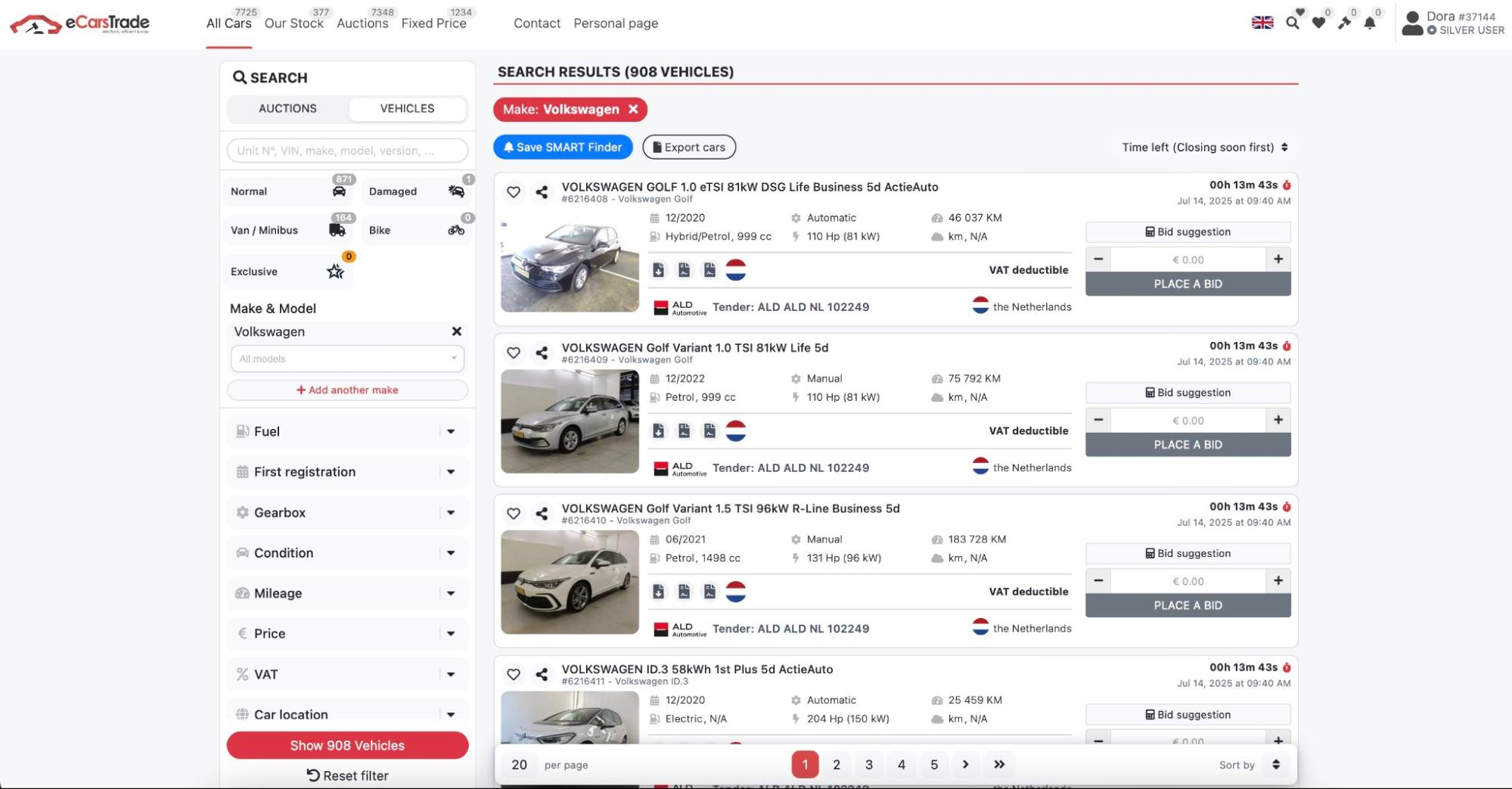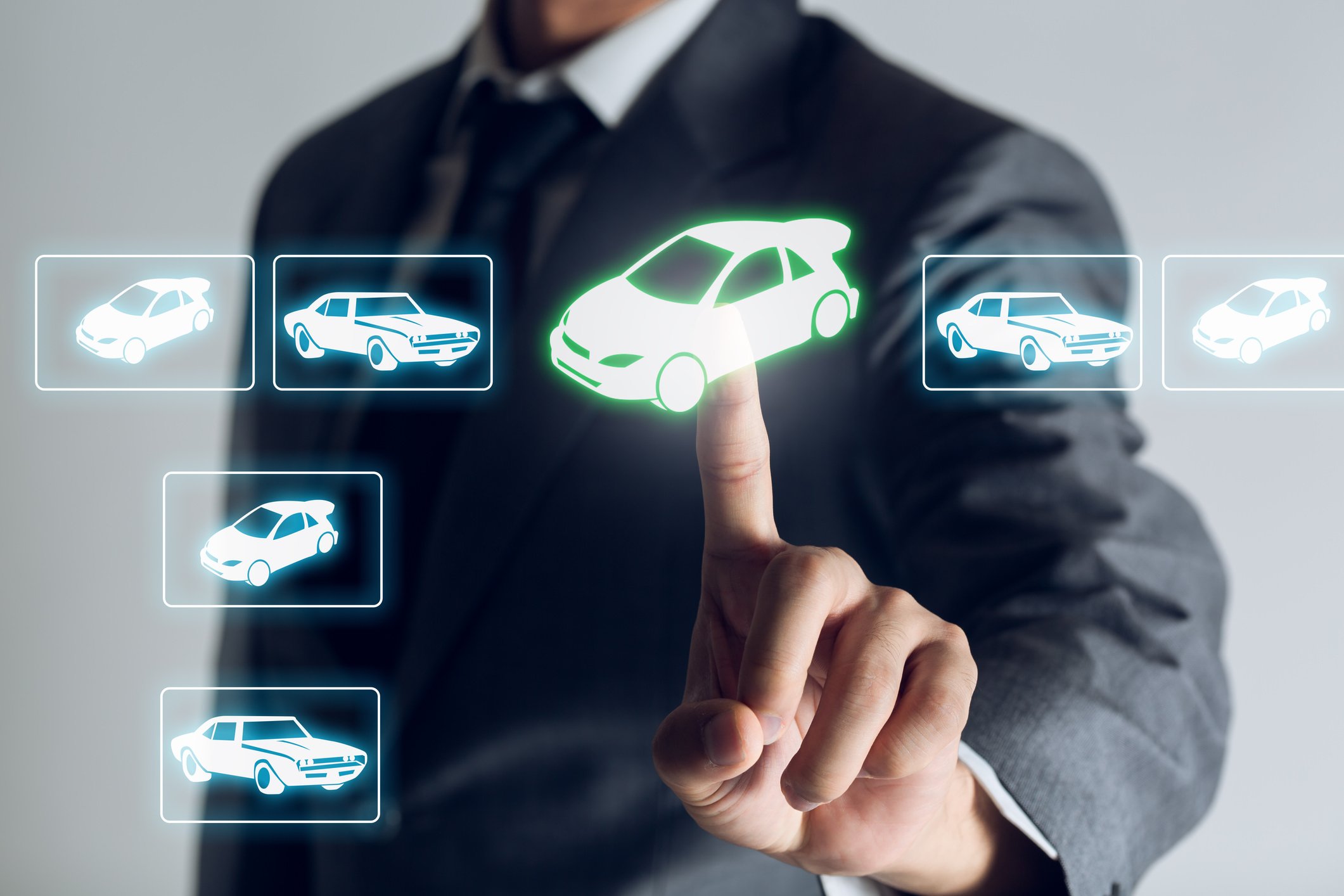- Blog
- Kako uvesti automobil u Crnu Goru
Kako uvesti automobil u Crnu Goru?
Ako želite početi uvoziti rabljene automobile u Crnu Goru, evo što trebate znati o dokumentima, porezima i cijelom procesu uvoza.

Želite li početi uvoziti automobile iz inozemstva u Crnu Goru? To je dobra odluka. Postoji stalna potražnja za pouzdanim rabljenim vozilima, a uvoz automobila iz EU ili drugih zemalja može vam pomoći da proširite svoju ponudu i dosegnete više kupaca.
Ali prije nego što započnete, važno je razumjeti kako proces funkcionira. Primjenjuju se različita pravila ovisno o podrijetlu automobila, a morat ćete pripremiti ispravne dokumente, platiti ispravne poreze i slijediti lokalne propise.
U ovom vodiču provest ćemo vas kroz crnogorsko tržište rabljenih automobila, pravila uvoza, potrebnu dokumentaciju i cijeli postupak korak po korak kako bismo vam pomogli da nesmetano i legalno uvezete vozila.
Uvozni propisi Crne Gore
Prije nego što počnete uvoziti u Crnu Goru, trebali biste biti svjesni nekih pravila koja je razlikuju od drugih zemalja . Najvažnije se odnosi na starost uvezenih vozila.
Od 1. srpnja 2024. više nije dopušten uvoz vozila starijih od 15 godina , bez obzira na podrijetlo. Ovo pravilo je lako slijediti kada koristite profesionalnu platformu za opskrbu automobilima.
Na primjer, godina prve registracije jedan je od glavnih filtera na eCarsTradeu i možete ga koristiti za brzo isključivanje vozila koja ne ispunjavaju crnogorske uvjete uvoza.

Drugi uvozni zahtjev navodi da rabljena vozila moraju ispunjavati barem Euro 5 standarde emisija, a nova vozila moraju biti u skladu s Euro 6, stoga imajte to na umu pri odabiru modela za kupnju.
eCarsTrade također ima opciju filtriranja pod nazivom Emisijska klasa, tako da možete jednostavno suziti pretragu na automobile koji odgovaraju potrebnom Euro standardu.
Sada kada znate na što trebate paziti, možete početi pripremati dokumente koji će vam trebati tijekom procesa uvoza.
Dokumentacija za uvoz vozila u Crnu Goru kao poslovni subjekt
Evo popisa dokumenata koji će vam trebati prilikom uvoza automobila u Crnu Goru.
► Račun za kupnju vozila
Ovaj dokument dokazuje vlasništvo i prikazuje kupovnu cijenu. Koristi se za izračun carine i PDV-a.
Ako ste automobil kupili putem eCarsTradea, račun možete lako pronaći na svojoj osobnoj stranici .

► Teretnica (Tortanica)
Dok faktura za kupnju navodi podatke o kupcu i prodavatelju, otpremnica navodi detalje o automobilu (VIN, broj motora, model itd.).
Ovaj dokument izdaje prijevoznička tvrtka i potvrđuje da je automobil poslan. Trebat će vam za carinjenje.
► Potvrda EUR.1 (potvrda o kretanju robe) ili izjava o podrijetlu
Možda će vam trebati i potvrda o prometu EUR1 , koja pokazuje podrijetlo automobila. Ako automobil koji uvozite dolazi iz zemlje koja ima trgovinski sporazum s Crnom Gorom (poput zemalja EU-a ili CEFTA-e), možete se kvalificirati za smanjene carine na temelju tog dokumenta.
Dakle, potreban vam je EUR.1 certifikat ako automobil vrijedi više od 6000 eura ili je prodavatelj privatna osoba.
Ali u nekim slučajevima vam neće biti potreban EUR.1 certifikat.
Ako automobil vrijedi 6000 eura ili manje i proizveden je u EU, stvari su lakše. U većini slučajeva dovoljno je imati kratku izjavu o podrijetlu napisanu na računu.
Prema crnogorskoj prijevozničkoj tvrtki Gostrade doo , izjava bi trebala glasiti:
„Izvoznik proizvoda obuhvaćenih ovim dokumentom izjavljuje da su, osim ako nije drugačije jasno naznačeno, ovi proizvodi preferencijalnog podrijetla EU.“
Izjava mora biti jasno odvojena od ostatka teksta računa i pojedinačno potpisana. S tim možete izbjeći carinu od 5%, čak i bez punog EUR.1 obrasca.
► Strani dokumenti za registraciju
Ovi dokumenti pokazuju gdje je automobil prethodno bio registriran. Koriste se za dokazivanje starosti, podrijetla i povijesti vlasništva automobila.
► Carinska deklaracija
Morat ćete ispuniti obrazac carinske deklaracije kada automobil stigne u Crnu Goru. To uključuje podatke poput VIN-a, tipa vozila, veličine motora i carinske vrijednosti.
► Dokaz o usklađenosti s emisijskim propisima (kao što je COC)
Crna Gora zahtijeva da rabljeni automobili zadovoljavaju barem standarde Euro 5 , a novi automobili Euro 6. Kako biste dokazali da vaše vozilo ispunjava te zahtjeve, možda će vas tražiti da dostavite Potvrdu o sukladnosti (COC).
Potvrda o sukladnosti je dokument koji izdaje proizvođač automobila, a kojim se potvrđuje da vozilo ispunjava sigurnosne i ekološke standarde EU-a, uključujući emisije.
Ako automobil koji ste kupili ne dolazi s originalnim COC-om, možete kupiti kopiju od pružatelja COC-a kao što su EUROCOC ili COC Europe .
Identifikacija tvrtke (i EORI broj)
Kao trgovačko poduzeće, morate biti registrirani kod Carine Crne Gore i imati EORI broj (povezan s vašim PDV brojem).
Porezi prilikom uvoza automobila u Crnu Goru
Prilikom unošenja vozila u Crnu Goru, morat ćete platiti nekoliko poreza i pristojbi. Evo detaljnijeg opisa.
Porez na dodanu vrijednost (PDV)
Standardna stopa PDV-a od 21% primjenjuje se na sva uvezena vozila.
PDV se obračunava na temelju carinske vrijednosti automobila, koja uključuje:
- Kupovna cijena
- Troškovi prijevoza
- Bilo kakve carine
Carine
Carine se kreću od 0 do 15%, a za motorna vozila obično iznose 5%.
Ako vozilo dolazi iz zemlje koja ima trgovinski sporazum s Crnom Gorom, poput članica EU ili CEFTA-e, možda nećete morati platiti carinu. Da biste ostvarili to oslobođenje, morat ćete dostaviti valjani EUR.1 certifikat ili izjavu o podrijetlu napisanu na računu.
Porez na prijenos vlasništva nad rabljenim vozilima
Crna Gora primjenjuje fiksni porez na prijenos vlasništva od 5% prilikom registracije rabljenog vozila. To se izračunava na temelju tržišne vrijednosti u trenutku prijenosa i odvojeno je od PDV-a i carina.
Kao trgovac, obično ne plaćate sami ovaj porez. Kupac ga plaća kada registrira vozilo na svoje ime.
Korak-po-korak proces - od kupnje automobila do uvoza u Crnu Goru
Sada kada znate pravila, dokumente i poreze, evo korak-po-korak pregleda kako zapravo uvesti automobil u Crnu Goru.
1. Istražite i kupite automobil
Recimo da ste istražili lokalno tržište i otkrili da su rabljeni Volkswagenovi automobili traženi. U tom slučaju, jednostavno možete otići na eCarsTrade, filtrirati po marki i filtrirati po emisijskoj klasi.
To bi vam omogućilo da brzo pronađete vozila koja zadovoljavaju crnogorska pravila uvoza i nastavite s procesom nabave.

Nakon što osvojite automobil na aukciji ili ga kupite po fiksnoj cijeni, plaćanje možete izvršiti unutar platforme.
Tamo ćete također primiti račun kako biste mogli pripremiti carinske dokumente.
2. Organizirajte prijevoz
Najlakši način prijevoza automobila do vašeg autosalona je najam kamiona. Pronađite uglednog logističkog partnera jer će se oni pobrinuti za papirologiju, pravilno utovariti automobil i dostaviti vam ga na vrijeme.
3. Nabavite potvrdu o sukladnosti
Kupili ste automobil koji zadovoljava crnogorske propise o uvozu, ali to i dalje morate dokazati. To možete učiniti s COC certifikatom. Ako automobil ne dolazi s njim, možete naručiti kopiju od pružatelja COC certifikata.
4. Pripremite carinske dokumente
Prije dolaska automobila, potrebno je prikupiti svu potrebnu dokumentaciju:
- Račun za kupnju
- Teretnica
- Dokumenti za registraciju u inozemstvu
- EUR.1 certifikat ili izjava o podrijetlu
- Dokaz o usklađenosti s emisijama (COC)
- Dokumenti za registraciju tvrtke (poput PDV broja)
5. Predajte dokumente na granici
Čim vozilo stigne na crnogorsku granicu, potrebno je predati uvozne dokumente i prijaviti se na carinski terminal u roku od 24 sata.
6. Obavite tehnički pregled
Automobil mora proći tehnički pregled i provjeru homologacije. Ovaj korak je obavezan za carinjenje.
7. Podnesite carinsku deklaraciju
Nakon pregleda, podnijet ćete potpunu carinsku deklaraciju. To uključuje račun, teretni list, stranu registraciju, COC ili certifikat o homologaciji i EUR.1 ili izjavu o podrijetlu.
8. Platite carine i PDV
Carina će procijeniti vašu deklaraciju i odrediti iznos carine (obično 5%) i PDV-a (21%) koji morate platiti. Nakon što to platite, vozilo je ocarinjeno.
Upoznajte crnogorsko tržište rabljenih automobila
Crnogorsko tržište automobila možda jest manje, ali je aktivno. U 2024. godini prodano je oko 4500 novih automobila , što je solidna brojka za zemlju te veličine.
Od 2025. godine , trenutno popularne marke u prodaji novih automobila uključuju:
- Dacia Sandero
- Hyundai Tucson
- Dacia Duster
- Škoda Fabia
- Renault Captur
- Škoda Kamiq
- VW Golf
- Suzuki Swift
- Fiat 600
- Citroën C3
- Audi Q3
U osnovi, lokalni kupci obično biraju male, pristupačne hatchbackove i SUV-ove koji su praktični i dolaze od marki koje poznaju i kojima vjeruju.
Što se tiče rabljenih automobila, detaljna analiza LinkedIna iz sredine 2023. godine obuhvatila je gotovo 9000 oglasa za vozila u Crnoj Gori. Utvrđeno je da njemačke i francuske marke dominiraju tržištem, a Volkswagen Passat je jasan lider.
Prema analizi, najčešće navedene marke na tržištu rabljenih automobila uključuju:
- Volkswagen
- Audi
- Mercedes-Benz
- BMW
- Renault
- Peugeot
- Citroën
- Opel
- Škoda
- Ford
- Nissan
- Fiat
- Sjedalo
- Toyota
- Land Rover
Još jednom možete vidjeti prevladavanje poznatih europskih marki. Dakle, kineska i korejska električna vozila možda još nisu prvi izbor za lokalne kupce, ali postoji jasna potražnja za poznatim, provjerenim modelima, a te podatke možete iskoristiti u korist svog prodavača.
Uvoz automobila u Crnu Goru - Često postavljana pitanja
► Koje emisijske standarde mora ispunjavati uvezeni automobil?
Rabljena vozila moraju ispunjavati najmanje Euro 5, a nova vozila moraju ispunjavati Euro 6 emisijske standarde.
► Trebam li uvijek EUR.1 certifikat?
Ne uvijek. Ako automobil vrijedi više od 6000 eura ili dolazi od privatnog prodavača, trebat će vam certifikat EUR.1. Ali za automobile proizvedene u EU vrijedne 6000 eura ili manje, obično je dovoljna potpisana izjava o podrijetlu na računu.
► Trebam li platiti carinu ako je automobil iz EU?
Ako automobil ispunjava uvjete trgovinskog sporazuma (poput EU ili CEFTA-e), možda ćete moći izbjeći carinu od 5%, ali samo ako imate važeći EUR.1 certifikat ili izjavu o podrijetlu.
► Mogu li uvoziti izvan EU?
Da, ali carine mogu biti veće, a automobil i dalje mora ispunjavati sve lokalne propise, uključujući starosnu granicu od 15 godina i Euro standarde emisija.
Uvoz vozila iz Europe može biti složen, ali eCarsTrade je tu da pojednostavi proces. Naučite kako:
_01JE9WH8CRTMG3B3WDH56WNJHD.png)

